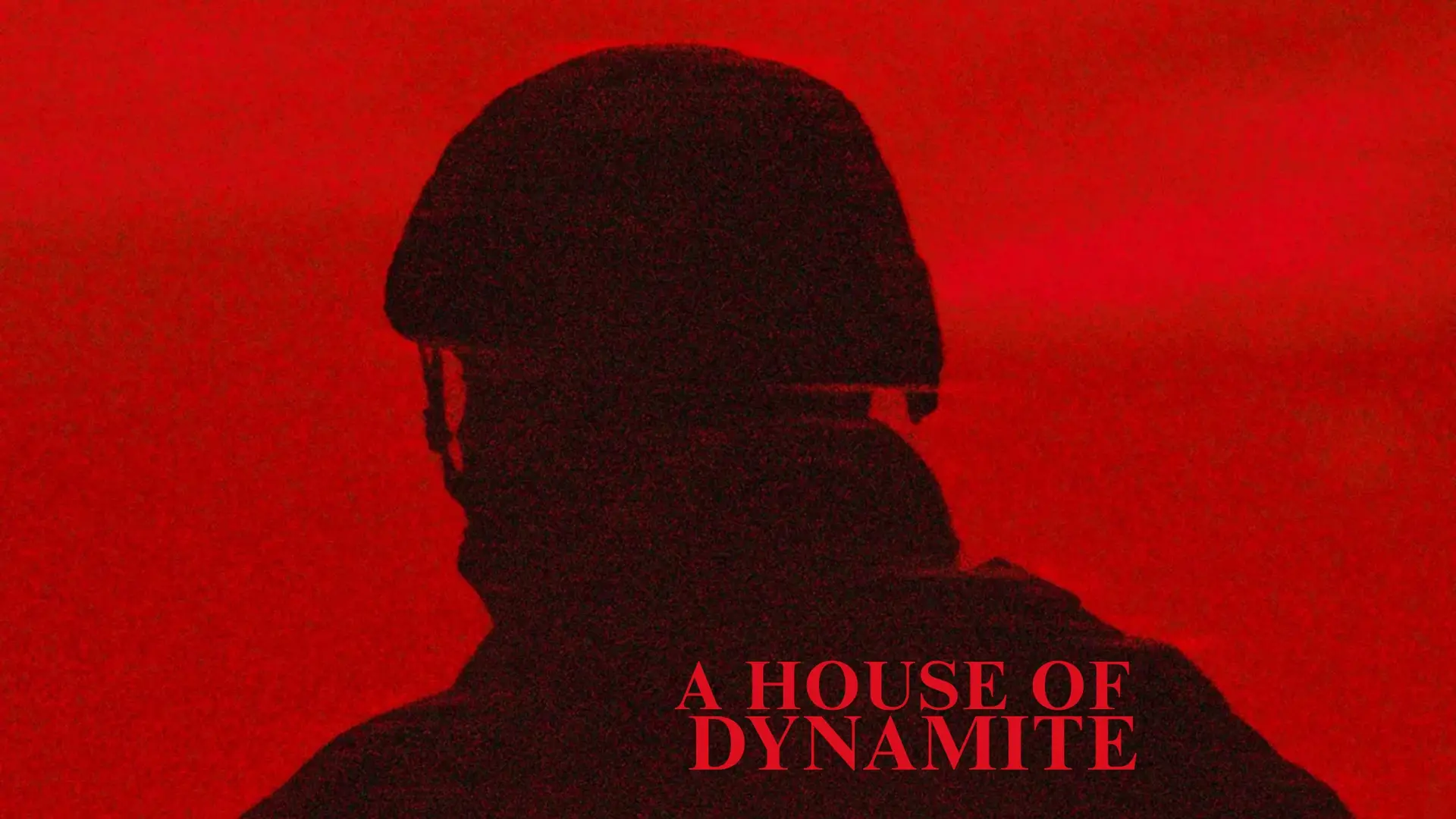Movie Blog — A House of Dynamite (2025): Nuclear Tension, Institutional Failures & the Weight of “Next-Time”.
Director Kathryn Bigelow returns with a high-stakes thriller that takes the most dangerous seconds in human history seriously. A House of Dynamite imagines a missile launched at the United States, and then plunges into the institutional machinery of response: the White House, STRATCOM, Alaska missile defence crews. It’s equal parts procedural, existential warning and character study under the pressure of mutually assured destruction. With its ensemble cast, intelligent scientific detail and grim thematic urgency, the film works as both entertainment and cautionary tale. Whether it fully satisfies as either is up for debate—but for anyone interested in how the world might break (and how it might respond), it’s a major film of 2025.
Quick Facts.
Director: Kathryn Bigelow.
Writer: Noah Oppenheim.
Main Cast: Idris Elba (the U.S. President) Rebecca Ferguson (Captain Olivia Walker) Gabriel Basso (Jake Baerington) Jared Harris (Secretary of Defense Reid Baker) Tracy Letts (General Anthony Brady) among many others including Anthony Ramos, Moses Ingram, Greta Lee
Runtime: ~112 minutes.
Release: World premiere at the 82nd Venice International Film Festival (September 2, 2025). Limited theatrical release October (UK Oct 3, global Oct 10), streaming worldwide on Netflix October 24, 2025.
Plot premise: When a single, unattributed nuclear missile is launched at the United States, a race begins to determine who is responsible and how to respond.
How many cast, and who’s the “means character”?
Cast
While the full cast list is very large (as is common with high-stakes government ensemble thrillers), the primary credited cast with significant narrative focus includes roughly 12-15 major performers, plus a larger supporting cast. We have the main leadership roles (President, White House Situation Room, STRATCOM, missile base in Alaska) and then ancillary staff, family members, media, intelligence officers. (For example, Brian Tee, Jason Clarke, Kaitlyn Dever also appear).
Means Character
In this A House of Dynamite film the “means character”—that is, the character through whom we most often experience the story, whose decisions carry the film’s weight—is the President (Idris Elba). The narrative repeatedly returns to the President’s dilemma: the chain of command, the moral burden, the ticking clock. While major characters such as Captain Olivia Walker (Rebecca Ferguson) and General Anthony Brady (Tracy Letts) have strong arcs, the film is structured around the presidential decision-making and the global consequences. Thus, Idris Elba’s role is the anchoring viewpoint.
Box Collection & Commercial Context.
Unlike many big studio tentpoles, A House of Dynamite is released via a hybrid model: limited theatrical run followed by streaming on Netflix. Therefore, traditional “box office” numbers may not fully reflect the film’s commercial success. At present:
- No major published gross numbers widely cited (the film’s limited release and streaming model make this difficult to assess).
- Streaming performance appears strong: Netflix reported 22.1 million views (42.4 million hours viewed) in the week of October 20-26, 2025, and the film hit No.1 globally in the Netflix Top 10.
- Critical reception is decent: Rotten Tomatoes shows ~76% fresh rating (as of source).
In sum: the film’s “box collection” in theatrical terms may be modest, but as a streaming vehicle it has achieved notable visibility. Its goal is less blockbuster profit and more urgency, relevance and awards-season positioning.
The Niche & Tone — What kind of movie is this?
This is a political / nuclear thriller—a sub-genre that blends geopolitical tension, institutional drama and existential stakes. Bigelow is returning to her zone of military/political realism (as in The Hurt Locker, Zero Dark Thirty) but focusing now on nuclear doctrine rather than boots-on-the-ground fighting.
The tone is:
- Tense and procedural: long sequences in war-rooms, situation rooms, communications centres, each decision amplified by the possibility of global annihilation.
- Realistic yet cinematic: The A House of Dynamite film uses accurate details (e.g., Raven Rock Mountain Complex, missile defence protocols) to ground the dread.
- Human-vernacular: Though the stakes are cosmic, the characters are individuals—morally burdened, politically constrained, personally vulnerable. Reviews emphasise the way Bigelow and writer Oppenheim let the human dimension shine.
Niche appeal:
- For fans of high-stakes thrillers, military and intelligence dramas.
- For those interested in nuclear weapons, institutional dynamics, crisis decision-making.
- Less for pure action lovers expecting explosion-fest; the film is cerebral, measured, with moral ambiguity.

Deep Narrative & Analysis.
Story Structure
The film unfolds in three interlocking segments covering the same ~18–20 minutes from different vantage points:
- The White House Situation Room (President, communications, intelligence).
- United States Strategic Command (STRATCOM) — e.g., General Brady, missile defence staff.
- The missile base in Alaska / ground-level operators — Major Gonzalez and crew.
This multi-perspective structure allows tension to accumulate as we see the threat from above, below, inside political corridors and across geography.
Key Act Beats
- Opening: A relatively peaceful morning; suddenly a missile launch detected. The A House of Dynamite film sets its premise early: someone fired a missile, target: Chicago (and by extension, the U.S.). The clock begins.
- Middle: The A House of Dynamite film spends its bulk exploring decision paths. Intelligence tries to attribute the strike; communications scramble; nuclear doctrine comes to life. The characters face decisions about launch, retaliation, diplomacy, survival. Personal back-stories and moral hesitations emerge.
- Climax & Resolution: Without giving away full spoilers, the A House of Dynamite film ends on a partial resolution / ambiguous note. The missile threat remains urgent; one might be intercepted; but the film ends with questions rather than certainty: “What do we do now?” said Bigelow.
Themes & Interpretations
- Mutually Assured Destruction (MAD) and System Fragility: The film highlights how the U.S. nuclear posture may rely on moments of near-failure, and how tenseness is built into everyday operations.
- Leadership in Extremis: Idris Elba’s President represents a person who must make decisions that can kill millions, yet operate through institutional filters. The film probes what responsibility looks like when the endpoint is apocalypse.
- Media, Perception & Real-Time Crisis: The outside world watches; there’s a media overlay, public fear, symbolic action (evacuations, alerts) which complicates decision-making.
- Ambiguity of Agency: Who fired the missile? The film keeps attribution blurry; the danger is not only the hostile actor but the system that allows “a single, unattributed missile” to be launched.
- Human cost of abstract systems: Despite the global stakes, we’re shown individuals: at home, in bunkers (“Raven Rock”), in Alaska, transforming daily life into survival theatre.
What Works
- Kathryn Bigelow’s return to political/military thriller is strong; her immersive style, ear for detail and ability to sustain tension translate well to this scenario. Reviews indicate it’s “tense, precise, sobering” for the genre.
- Ensemble cast delivers credible performances; Elba, Ferguson, Harris and others give weight to roles that could slip into caricature.
- Visual & conceptual clarity: The A House of Dynamite film uses its “three vantage points” structure to good effect. Netflix’s Tudum article breaks it down.
- Relevance & urgency: In a world where nuclear risk is again prominent, the film’s message resonates; Bigelow’s aim to spark conversation about nuclear stockpiles and risk is explicit.
What Doesn’t Land / Challenges
- Reviewers note some disappointment: The Guardian describes it as “both political fantasy and major disappointment.”
- The ending’s ambiguity is divisive. Some viewers may feel unsatisfied that the missile launch’s origin remains unresolved, that the film resists neat closure. Bigelow defended this as intentional: “What do we do now?”
- Because of its streaming release model, the theatrical “event” sensation may be muted—though streaming viewership is strong. Still, for fans of popcorn spectacles, the film’s slower, procedural pace may feel under-heated.
- The tech/defence details, while grounded, may feel dense for casual viewers and the thematic breadth may sacrifice emotional depth for some audiences.
Final Verdict — Is This Worth Your Time?
Yes—if you’re drawn to intelligent, adult thrillers that ask big questions. A House of Dynamite is not simply a popcorn atomic-blast film; it’s a deeply considered exploration of leadership, crisis and risk. It’s for viewers willing to be made uneasy, to watch the gears of government turn under existential threat.
If you prefer straightforward action, clear villains, and decisive endings, you might be frustrated by the film’s nuance and ambiguity. But for watchers who like their thrillers thoughtful, their stakes real, and their questions open—this is one of 2025’s more compelling entries.
Watch it on Netflix (or in the limited theaters if available) with the understanding that it’s as much about what could happen—and what we’re living under—than what did happen. It invites reflection. It invites alarm. And, yes, it invites a conversation.





